- Your exams are returned. There is a curve: I assume that the total number of points is 90. Thus divide your score by 90 for a percentage.
- As promised, I took the first three problems (40 points) off of the worksheet (2d, 1f, 3ab). Problem 6 is five problems from section 11.7, testing whether you can use the various tests for convergence/divergence (including some which we'd done in class).
- a copy of the exam
- the key
- Reminder: I won't be here tomorrow or Wednesday -- Prof. Steve Wilkinson will be with you, to work on two important operations in vector calculus: the dot and cross products.
- I'll be back on Thursday, at which time we'll have a review session.
- Uniform Circular Motion is best understood using the concepts of vector geometry.
So are many other concepts from physics, where quantities have a direction and a "strength" -- a rocket in flight, for example. It is moving in a certain direction, and it has a speed, whose value can be represented by the length of a vector.
- vector: a quantity with length and direction:
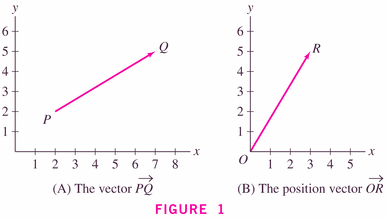
- In uniform circular motion, we could represent the position of the bob by parametric equations
and
We then combine these into one quantity, the vector
.
- The three vectors that are (most) important in the physics
of circular motion are the vectors of
- position
- velocity
- acceleration
- position
- Animations, demonstrations:
- Uniform Circular Motion
- For all of the gory details, a nice layout of all the physics, and a cool (but scary) example, let's check out physclips -- the Australian dialect makes it more fun, too!
- vector: a quantity with length and direction:
- If a vector is in two-dimensions, then the length
is just given using the Pythagorean theorem formula:

For a vector given by

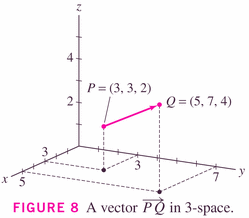
Hence in 3-d,
we have
or for
Obviously this can be generalized to vectors in four dimensions, five dimensions; even six dimensions. Maybe seven dimensions, too; or even n dimensions! (Especially important for you statisticians).
Examples:
- 3-D Point drawing instructions
- #1, p. 814
- #2
- #3
- #4
- #5
- #6
The equation for a sphere centered at the point (h,k,l) of radius r given in our text is
This is the set of points P at a distance of r from the point (h,k,l).
Examples:
- #12, p. 814
- #17
- #21
- #23-33 odd
- The vectors above are given with components:


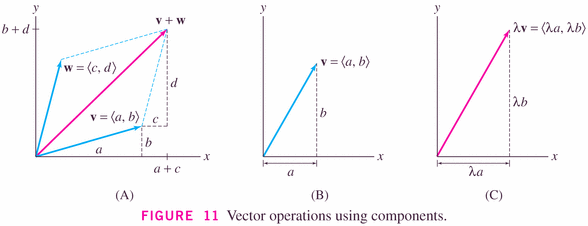
- Figure 11 illustrates the so-called parallelogram
rule:
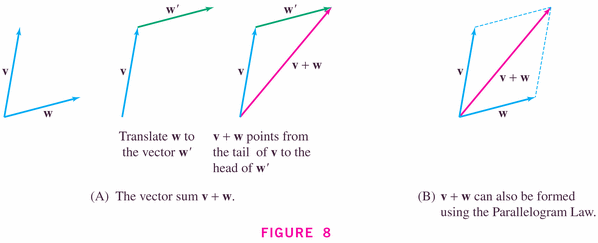
Examples:
- #5, p. 822
- #15
Here it is in three-space:
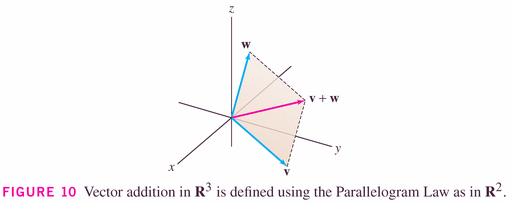
with the obvious changes to formulas because you now have three components, instead of two:

- Vectors with length 1 are special, called unit
vectors, and are important because they can be dedicated to
showing direction:
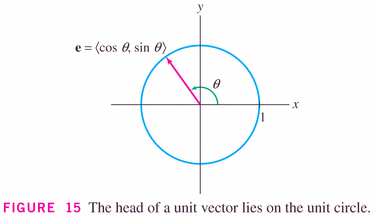
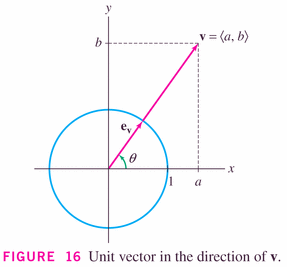
It's clear that we can turn any vector into a unit vector, by simply scaling it:

Examples:
- #23, p. 823
- #24
- We use special components and the parallelogram rule to
write each vector in terms of a basis of vectors (equal
in number to the dimension of the space): for example, in
two-space, the usual basis is given by the two (perpendicular)
vectors denoted i and j:
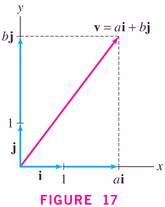
and, in three-space,
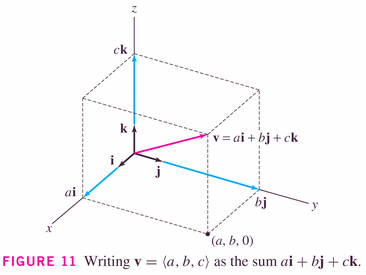
- Theorems:


The Triangle inequality basically says that the diagonal of a parallelogram is shorter than or equal to the sum of the two sides:
"The shortest distance between two points is a straight line." In the case of Figure 17 (for vectors at right angles to each other)

and the only time you'll have equality is when either a or b is zero.
Examples:
- #29, p. 823
- #31
- #42, p. 824